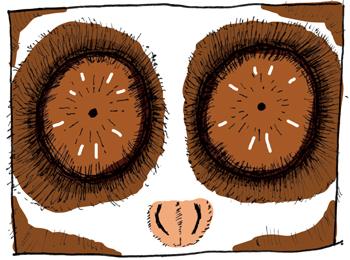 What is so rare as a slow loris in June? Would a slow loris by any other name smell as sweet? Today, we shall journey down a zoological rabbit hole to visit our old friend, the slow loris.
What is so rare as a slow loris in June? Would a slow loris by any other name smell as sweet? Today, we shall journey down a zoological rabbit hole to visit our old friend, the slow loris.
As we all know, Loris is a small town in South Carolina, which stands between Fayetteville and Myrtle Beach. The slow loris is a lemur-like critter that has nothing to do with South Carolina. The slow loris is a native of South Asia. Befitting its name, the slow loris spends most of his day curled up in a ball sleeping in a tree, waiting for night to fall.
This behavior is reminiscent of a congressman or a member of the North Carolina General Assembly waiting for free food at a buffet sponsored by a corporate lobbyist. Like our legislative representatives, the slow loris waits until night to eat.
It is unclear if the slow lorises were labeled when young and placed in special education classes. No slow loris ever had an Individualized Education Program. The slow loris likely got its name in reference to his lack of physical speed. He is a little guy, weighing from about 7 ounces to 2 pounds.
The slow loris, or SloLo as his friends call him, will eat anything — fruits, leaves, vegetables, small birds and little reptiles. To call SloLo by his scientific name, you would refer to him as a nocturnal strepsirrhine primate. Try saying nocturnal strepsirrhine primate three times fast. Go ahead. I’ll wait. Not easy, is it? That’s why his buddies call him SloLo. It’s easier to say.
SloLo has tiny little hands like America’s own Dear Very Stable Genius Leader. SloLo is armed with fingers that allow him to grasp tree branches to hang around for long periods. He avoids falling on the jungle floor where bad things might happen to him.
The dandy thing about SloLo is, despite being the size of an hors d’oeuvre, larger predators give him great respect and don’t eat him. Why don’t they eat him, you ask? He’s slow, tiny and sleeps during the day, making him an easy target.
Despite the difficult hand dealt to SloLo by Mother Nature, he prevails. SloLo has a super power. His tiny little teeth are toxic. He is the only poisonous primate. Despite his cute appearance and yearning eyes, he can poison you with a bite. He has grooved teeth that let him hold poison in his mouth — the better to chomp you.
He stores his venom in glands in his elbows. He slurps down on his elbows, and his saliva, like the activated charcoal in Kent cigarettes, causes the venom to burst into full nastiness. The better to bite you with, my dear. Mamma SloLo licks her elbows to gather venom. She then licks it all over the baby SloLo, grooming him with poison. The other jungle critters know that if they eat a baby SloLo, they will get a case of gastro esophageal reflux that would send them to the jungle Emergency Room — if there were an ER in the jungle. Since the predators don’t have Blue Cross, the baby SloLos can pass their childhood essentially uneaten.
SloLos do have a few enemies. Snakes and orangutans have a taste for SloLo toxin, but the other bad guys know them and leave them alone. A threatened SloLo goes into the freeze mode, remaining still until the danger passes. Unfortunately, the local human population believes SloLos have supernatural powers that can ward off evil spirits and heal the sick. This leads to SloLos being hunted by humans. As the SloLo freezes when frightened, catching them is akin to shooting fish in a barrel. Not very sporting, but very easy.
It remains to be seen if a fast loris exists. We hope for no fast lorises. Consider zombies. The vast majority of zombies are slow and lumbering like those portrayed in “The Walking Dead.” Most people can outrun zombies. Unfortunately, there is a genus of zombies who can run as shown in the movies “28 Days” and “28 Days Later.” If chased by a running zombie, most people will end up as zombie chow, as zombies never get winded because they don’t breathe. If there are fast lorises, the poisonous tooth would be on the other foot as the fast loris could catch and bite the natives who are killing its cousin, the slow loris.
So, have we learned anything today? Once again, probably nothing. Better luck next time. However, if Shakespeare had ever met a slow loris, literary history would have been changed. Consider the plays he would have written: “All’s Well that Ends with a Slow Loris Bite,” “Slow Loris Labor’s Lost,” “Merry Wives of Slow Loris,” “Much Ado about Slow Lorises,” “Taming of the Slow Loris” and “A Midsummer Night’s Slow Loris.” As Mitch Miller once sang, “Be kind to your poisonous primates in the swamp, for a slow loris may be somebody’s mother.”

 How to resolve AdBlock issue?
How to resolve AdBlock issue? 








